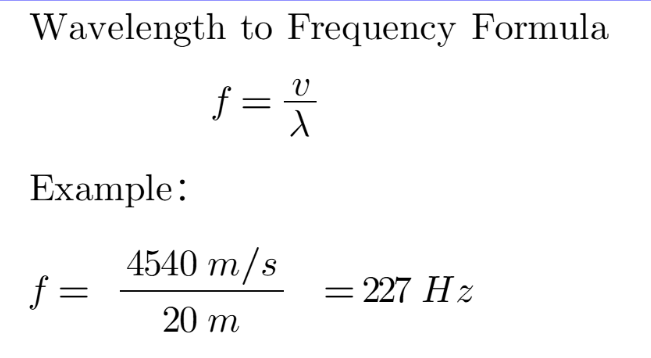 Home
Home
 Back
Back

Wavelength (λ) is the distance between two consecutive crests or troughs of a wave. It represents the spatial period of the wave, and its SI unit is the meter (m).
Frequency (f) is the number of waves that pass a given point per second. It is measured in hertz (Hz). A higher frequency means more energy, while a lower frequency corresponds to less energy for the same amplitude.
The formula to calculate the wavelength of a wave is:
\(\lambda = \frac{v}{f}\)
where:
You can rearrange this formula to calculate the frequency given the wavelength:
\(f = \frac{v}{\lambda}\)
The audible frequency range of sound in air is from 20 Hz to 20 kHz. This means any sound with a frequency within this range can be heard by our ears and is referred to as audible sound. The speed of sound in air is approximately 345 m/s, which varies slightly with temperature. Based on these values, we can calculate the wavelength of audible sound, but note that the wavelength will vary depending on the specific frequency within the audible range.
The wavelength of light can vary depending on the type of light (e.g., visible light, ultraviolet light, infrared light). For example, the wavelength of red light in the visible spectrum is approximately 740 nm (nanometers) or 7.4 × 10^-7 m (meters). You can use this value (or any other wavelength for different types of light) to determine the frequency using the formula:
\(f = \frac{v}{\lambda}\)
where:
For light in air, the speed \(v\) is approximately 3 × 10^8 m/s. Using this value and the wavelength of red light:
\(f = \frac{3 × 10^8}{7.4 × 10^{-7}}\)
\(f \approx 4.05 × 10^{14}\) Hz
Amazing, isn't it? So many waves in just one second. This is why we see light immediately without any delays.